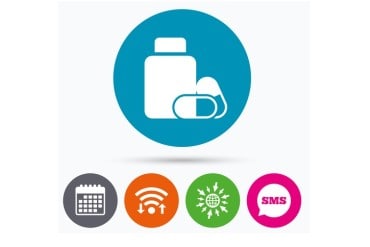
5G supports real-time data at points of origin, which can be used to uncover supply chain problems across inventory at speed, predicting future disruptions.
For decades, we’ve taken supply chains for granted. When you needed a part for manufacturing, you booked your order, and it shipped. Lately, the lingering Covid crisis has shaken many managers out of their comfort and complacency about global distribution systems, with many looking to new approaches to assure viability and resiliency. Attention is increasingly being drawn to an emerging set of standards and technology – 5G networks – that may help secure a steadier foundation for global business networks.
That’s the gist of a special report prepared for the World Economic Forum by Aongus Hegarty, president of International Markets for Dell Technologies. The 5G revolution “doesn’t just mean faster internet; 5G is a deeper level of connectivity that lays the foundation for the Fourth Industrial Revolution to create more efficiency in all industries.”
Featured Resource: Building a 5G Blueprint to Speed Deployment and Time to Revenue [View Now]
The recent Covid crisis – with the continuing fallout in terms of supply chain disruptions, workforce shortages, and cybersecurity issues – points to the need for a more resilient business infrastructure, Hegarty states. Such resiliency can be found in an open 5G network – wireless, software-based and automated rather than built on legacy systems – that creates “better economic opportunities and job security, provide academic support for students and reinvigorate local businesses. It can also open the door to new innovative technologies, such as autonomous vehicles, energy-efficient cities, and smart agriculture systems.”
The Covid crisis laid bare “inefficiencies and vulnerabilities in many supply chains, so organizations need to address these issues to prepare for future disruption,” Hegarty explains. “Businesses should invest time and resources into re-evaluating their supply chains to find and address weaknesses. Once they find vulnerabilities, they can use advances in technology, like automated systems and data-driven insights, to modernize their supply chains and be more resilient.” This is where 5G networks demonstrate their value.
See also: For Highly Diverse Organizations, 5G Has Many Options
Here are six ways 5G will positively realign supply chains, as documented by Hegarty and other industry experts:
Real-time data: 5G supports real-time data at points of origin, which “can be used to uncover supply chain problems across inventory at speed, predicting future disruptions and modeling solutions,” Hegarty says. Employing 5G to transmit data within and across supply chain partners’ systems means reduced “lag time between when a sensor detects an event and when it’s recognized by the system,” agrees Gary Wollenhaupt, writing in Supply Chain Dive. “For the supply chain, reduced latency can enable vehicle-to-vehicle communication for automated trucks and warehouse robots. Processing power will be able to move closer to the work, making sensors and mobile devices more capable.”
Smart inventory management: “5G’s high-speed network ensures the collection, delivery and archiving of goods and products is more transparent and efficient for enterprises,” says Amit Gautam, writing in Forbes. “5G can address three key areas in inventory and warehouse management: optimizing critical processes, enabling remote maintenance and control, and deploying autonomous vehicles for transport.” A supermarket chain, for example, can employ 5G networks to “leverage networked solutions to optimize the processing, packaging, and delivery of goods, reduce downtime and streamline their entire order processing system using robotics” – which requires higher bandwidth, speed, and latency capabilities than Wi-Fi offers.
Greater supply chain visibility: “Just-in-time manufacturing can track parts moving to the assembly line in real time compared to simply relying on the scheduled arrival,” says Wollenhaupt. “Some large shippers are already using 5G-enabled sensors to improve product tracking in warehouses. Industries that ship high volumes of small parcels or combine products into kits will be able to track individual products and components. 5G will make it easier and more effective to monitor temperature, humidity, and other environmental factors for sensitive products.”
Track and trace: “Today, the majority of companies still use manual controls to track and trace products,” Gautam. “With 5G, logistics companies can label, track and record all shipments automatically, which addresses a host of issues such as lost cargo, misplaced containers, counterfeiting and smuggling, and generally inefficient manual processes.”
Product monitoring: “5G allows you to monitor at the SKU level, so you have more detailed knowledge of what condition your product is in, where it is and when it’s going to get to your customer,” says Wollenhaupt.
Fleet management: 5G enables “real-time responses concerning vehicle safety status and collision avoidance,” says Gautam. “Autonomous vehicles use advanced sensors and collision avoidance capabilities that keep them within specified lanes, avoid collisions, deploy real-time delivery status updates and seek emergency services. But all this is only possible with low latency networking for reliability and safety. This network infrastructure not only becomes easy to deploy with 5G but also improves the potential automation capabilities in these vehicles.”
Featured Resource: Building a 5G Blueprint to Speed Deployment and Time to Revenue [View Now]







